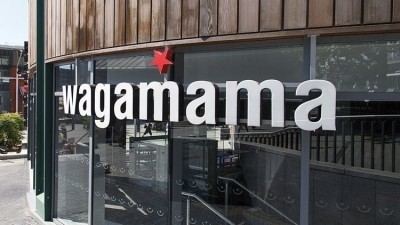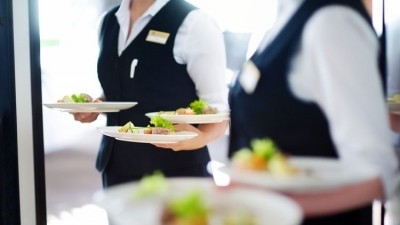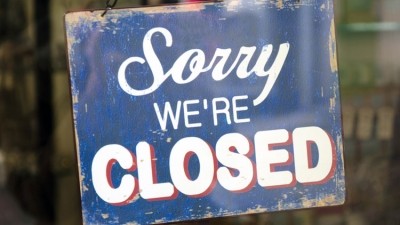What the easing of restrictions around the world might mean for UK restaurants

When France’s president Emmanuel Macron announced on Monday (13 April) that the country would start to lift lockdown restrictions on 11 May, with nurseries, schools and colleges to be “progressively opened” as a priority, it offered a glimmer of hope for many that life across Europe might soon return to some sort of normality.
Yet for those in the hospitality industry, Macron’s comments did not augur well, with the president stating further that restaurants, cafes and hotels would stay closed for much longer, with none expected to open in the country before mid July at the earliest.
For many restaurant businesses in the UK, which is a few weeks behind France in terms of lockdown measures, a reopening date of August – if the UK Government were to follow France’s reopening lead time – would likely spell catastrophe unless more support was given their way.
The French approach is not the only option available to the UK, however, and other Coronavirus-hit countries have taken different stances to when to reopen hospitality businesses.
Both Denmark and Austria are planning to allow restaurants to open in mid-May, although both countries haven’t been as badly hit by the pandemic as the likes of the UK, Italy, Spain and France.
Italy, which was one of the first European countries to see spikes of infections and now has one of the highest death tolls – allowed some non-essential businesses to open as of yesterday (14 April) but it’s unclear when restaurants will re-open. The situation is broadly comparable in Spain, which was also hit badly by the virus.
After three months of battling the crisis, China says it is now starting to come out the other side with the majority of the country’s restaurants now back up and running. Though it’s difficult to make generalisations in a country as vast as China, reports from major cities including Hong Kong and Beijing suggest that trade is significantly down on pre-pandemic levels despite safety measures being put in place.
With the UK peak yet to come, it remains extremely difficult to predict when restaurants will be allowed to re-open and what restrictions may need to be put in place when they do. At present, it is understood that the Government does not intend to relax lockdown restrictions any time this month.
Yet restaurant businesses are already thinking about when they may be able to reopen. Earlier this month, Wagamama and Frankie & Benny’s owner The Restaurant Group (TRG) said that a ‘pessimistic’ scenario could see some of its restaurants start to reopen by July, with 400-600 of its sites operational by December.
Peach Pubs managing director Hamish Stoddart also says that he has a mental date of the 1 July when his pubs will reopen. “I just said at the beginning it’s 1 July and focus on that and that really helped us all, including me,” he says.
“Obviously, it won’t be 1 July, it will either be later or slightly earlier, but the target is to be ready to go by then and be adaptable.”
Businesses are also starting to consider what a post lockdown hospitality sector could look like in terms of social distancing restrictions that may need to be adhered to.
Chef and restaurateur Jason Atherton says his restaurant business The Social Company has been looking at potential aspects of running a restaurant in a post lockdown environment, which might require some form of social distancing.
“We are putting plans in place ready for social distancing in case that happens inside restaurants, how we’re going to serve guests and then stand back and explain the food, and how we are going to serve wine from one and a half metres away,” he says. “There’s a million things that will hit you hard if you don’t try and get on top of things now.”
More concerning for hospitality businesses, however, is what the impact of social distancing measures might have on trade once restaurants are allowed to reopen.
With many restaurant businesses already struggling pre-Coronavirus, a hit on trade caused by people being advised to work from home even once lockdown restrictions have been lifted, by restrictions on how many people can eat in a restaurant and by a lack of tourist trade might sound the death knell for businesses no longer protected by furlough.
TRG says it expects a slow recovery in footfall during the rest of this financial year as a result of social distancing measures likely to remaining in place post lockdown.
Dishoom chief operations wallah Brian Trollip also says he expects business at the Indian restaurant group to be significantly lower in the months following the lifting of lockdown restrictions because of the impact of the pandemic on tourist numbers, which make up an important part of Dishoom’s customers.
What is painfully clear is that a lot is riding on the Government’s decision on when to reopen the country. If the hospitality sector remains closed for too long, many restaurant businesses will fail to reopen. Yet if the lifting of the lockdown is too hasty, and future lockdowns are required, it could exacerbate what is already a terrible situation.
“The worst-case scenario is that we reopen, start to pick things up and are then forced to close again,” says Trollip. “That would be the worst for us.”
Global view – how Coronavirus-hit countries have dealt with hospitality measures
China
Restaurants are starting to re-open across China, which was the first country hit by the pandemic. Restaurants were not asked to close as part of lockdown measures in most areas of China, but trade has been significantly down. While the crisis in China appears to be easing, things are far from back to normal, with many restaurants still shuttered and rules in place for those restaurants that have been able to re-open. There is apparently a great deal of variance in how the Government’s guidelines have been interpreted by local authorities (which are responsible for enforcement) and restaurants themselves, but measures include more spaced out seating, bans on larger groups of diners and temperature checks at the door. Significantly, trade is down considerably on pre-virus levels, suggesting that the public is cautious about dining out despite safety measures having been put in place.
Italy
The Coronavirus has been disrupting the Italian restaurant industry since early February when trade and bookings started to drop off. Many restaurants - especially those that rely heavily on tourists - closed during February and on 12 March Italy forced all non-essential businesses to close including eat-in restaurants (off-premises sales are still permitted). Despite infection rate and deaths now slowing significantly, the government has extended its lockdown until 3 May, although it did allow some non-essential businesses including bookshops and stationers to re-open today. With the country the first and one of the worse hit by the Coronavirus in Europe, the timing of restaurant re-openings and what safety measures will be in place there will be significant.
Spain
Spain is also taking tentative steps towards exiting its Coronavirus lockdown. Restaurants and bars remain closed but several hundred thousand non-essential workers are now back at work following the recommencement of the construction and manufacturing industries. Masked commuters were pictured this morning exiting Madrid’s subway, although not everyone is happy about the easing of the restrictions with some opposing politicians saying that allowing people to return to work is “irresponsible and reckless”.
France
France is behind Italy and France in terms of the pandemic but a little in front of the UK. Emmanuel Macron has extended the country’s lockdown but said that the government would look to start re-opening the economy from 11 May. Restaurants, bars and cafés, however, won’t re-open until mid-July at the earliest. The French president will announce a plan to support the country’s tourism sector within the next few days.
Germany
The German government is generally considered to have handled the pandemic well with a huge testing program that appears to have resulted in a much lower mortality rate for Covid-19 than its neighbours. With new cases down for the last few days, chancellor Angela Merkel is now under pressure to ease restrictions. Further announcements are due later this week. As a country that has so far handled the crisis very effectively it will be interesting to see Germany’s stance on its restaurants as it starts to come out of lockdown.
Austria
Austria introduced lockdown measures fairly early on 16 March and - around five-weeks later - is now starting to lift them. The country is taking a piecemeal approach: small non-essential shops will open first followed by shopping malls and hairdressers. Restaurants and hotels could open as early as mid-May, although the Government says that if cases start to rise again it will reimpose some restrictions. Denmark is taking a broadly comparable approach to Austria with restaurants expected to re-open there in mid-May.
Sweden
Sweden initially took a soft approach to tackling the Coronavirus crisis with restaurants allowed to stay open. While some remain open for the moment (others have been forced to close because of a lack of trade), a lockdown is now expected now that the country has reported a greater number of deaths than its three Nordic neighbours (Finland, Denmark, Norway) combined.
The US
Donald Trump has been widely criticised for his handling of the crisis after ignoring advice about introducing social distancing measures in the critical early stages of the crisis. On 16 March he urged Americans to avoid eating and drinking out, prompting many states to immediately introduce bans on eating out, although some moved quicker than others. Trump faced criticism earlier this month for again defying experts by seeking to re-open businesses by Easter. This Saturday, it was announced that the US had overtaken Italy as the country with the most deaths, and the curve suggests worse is to come making the future very uncertain for US restaurants. In the US far more major national brands have continued to offer food for off-premises consumption (drive-thrus are also allowed to continue to operate in most states). McDonald’s, Burger King and Subway are completely closed in the UK but continue to operate in the US.





















